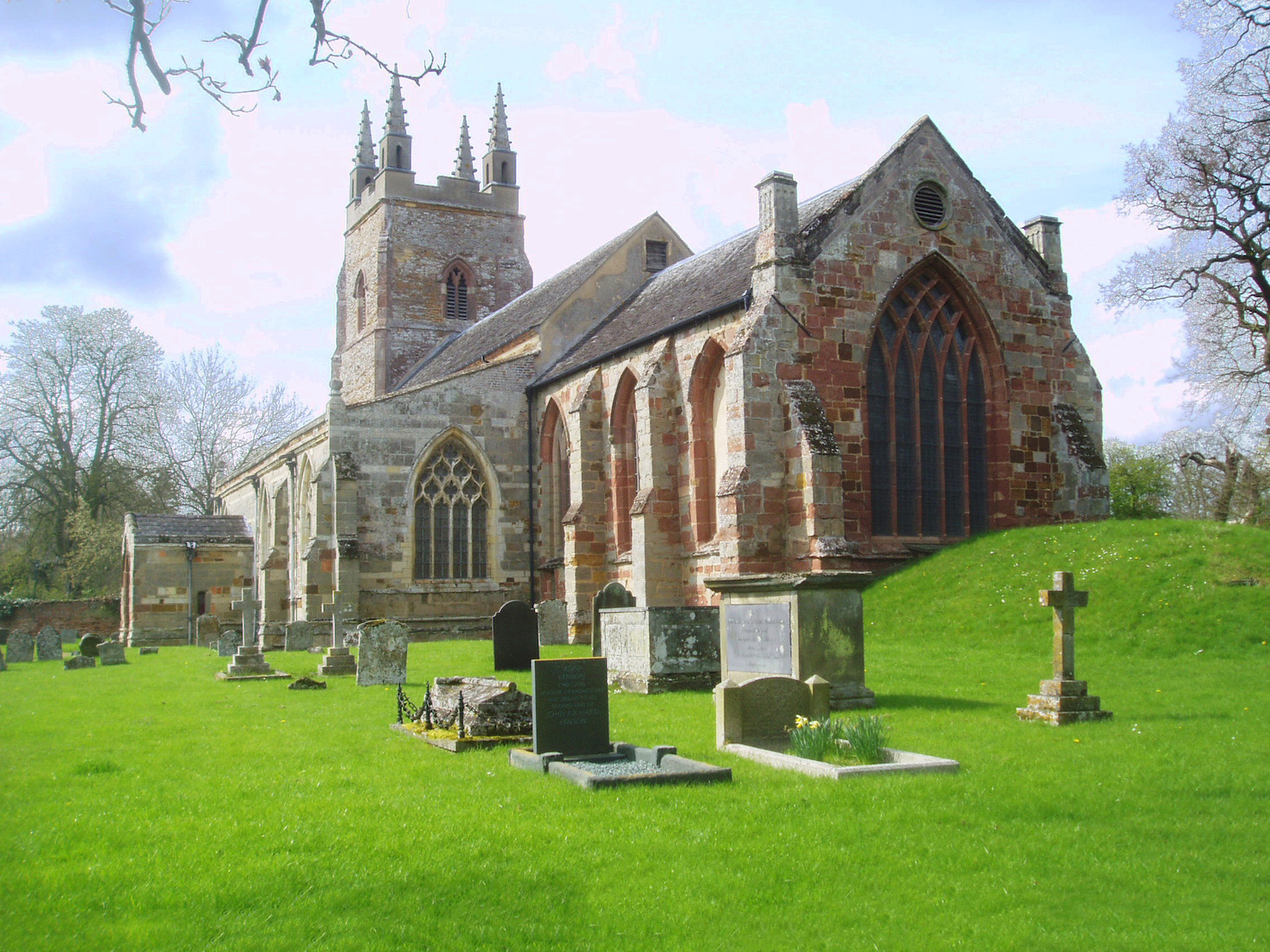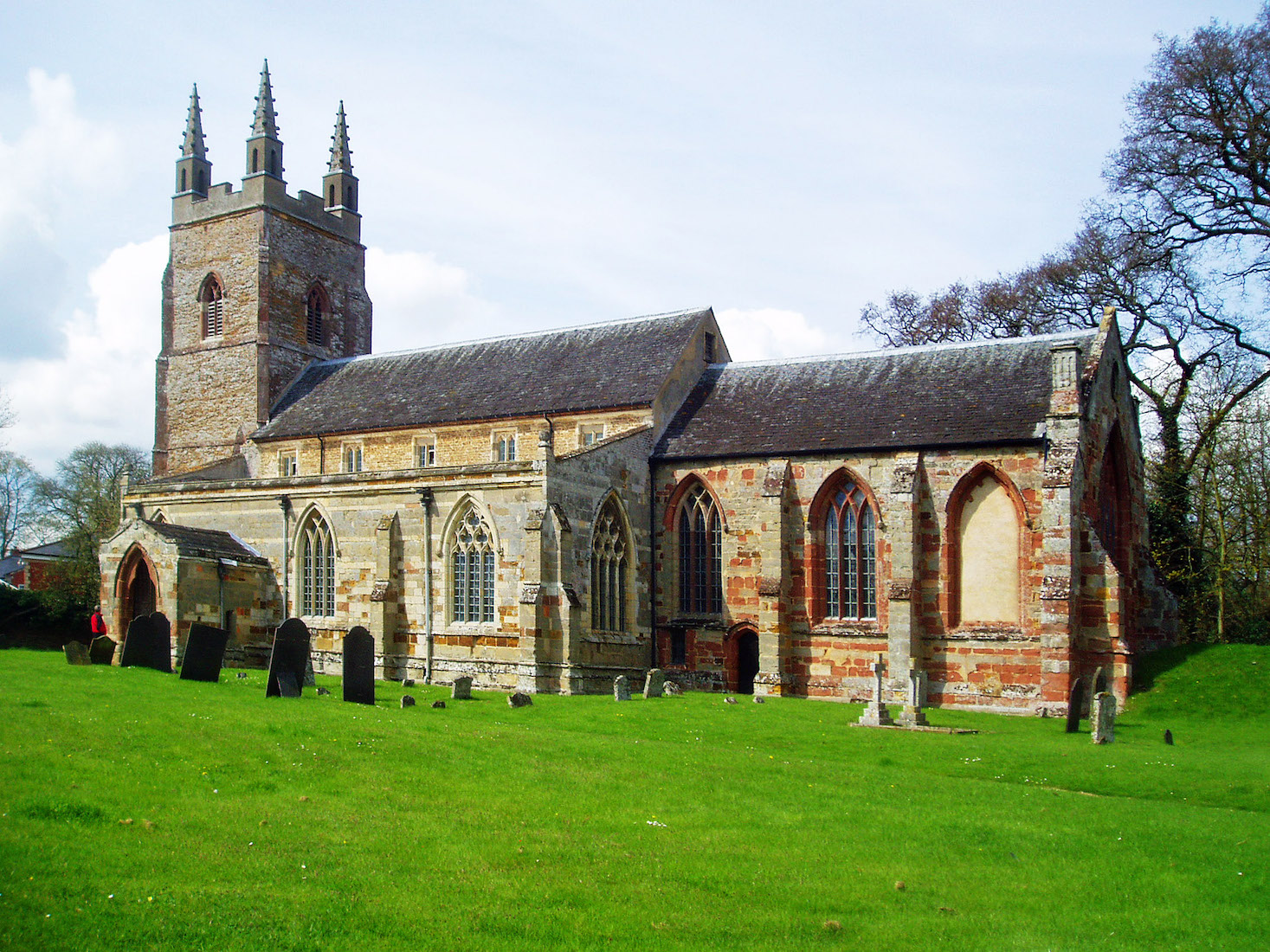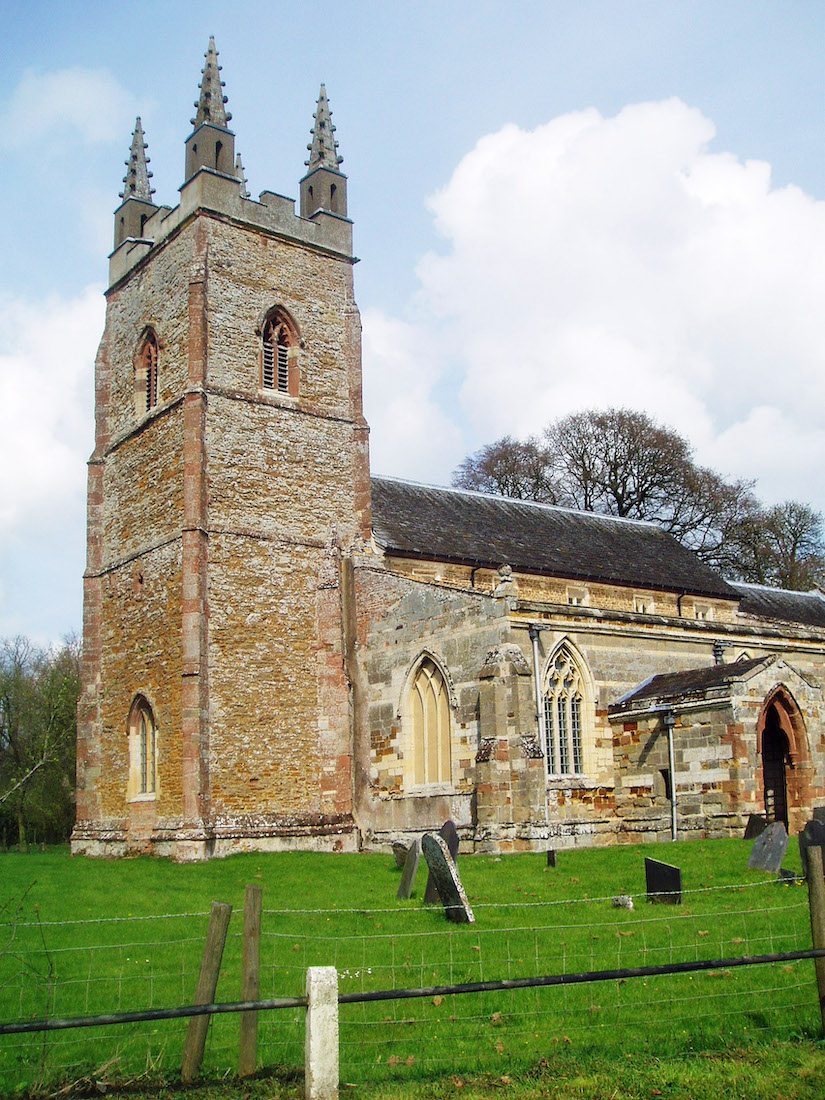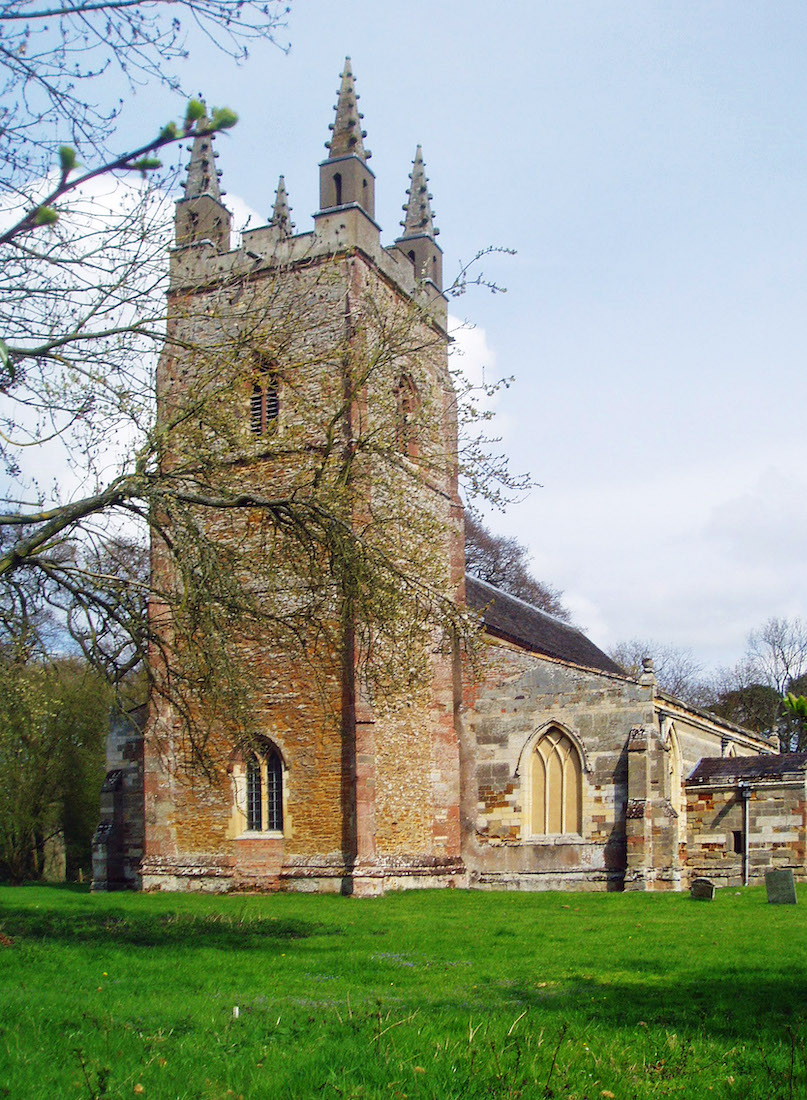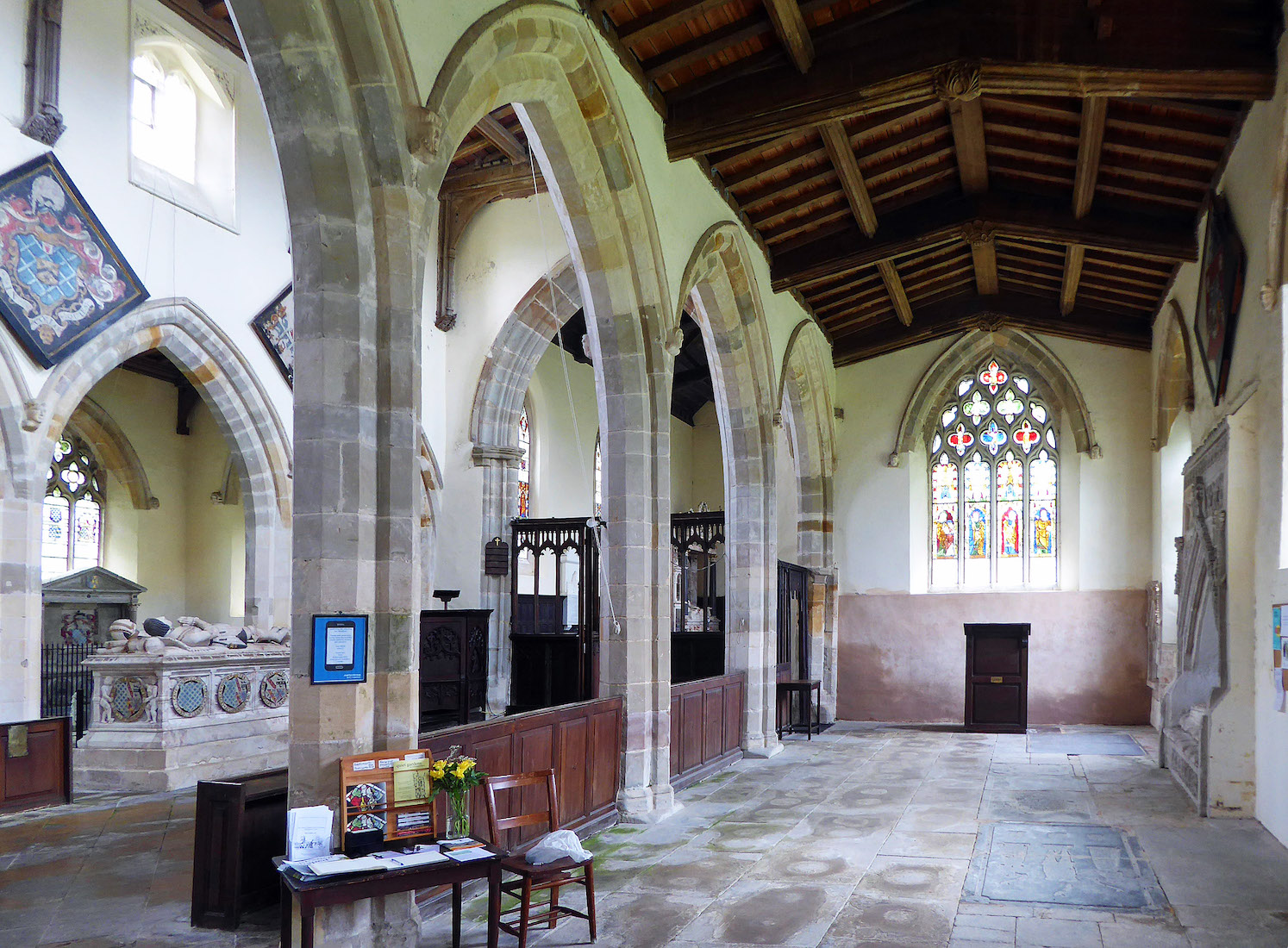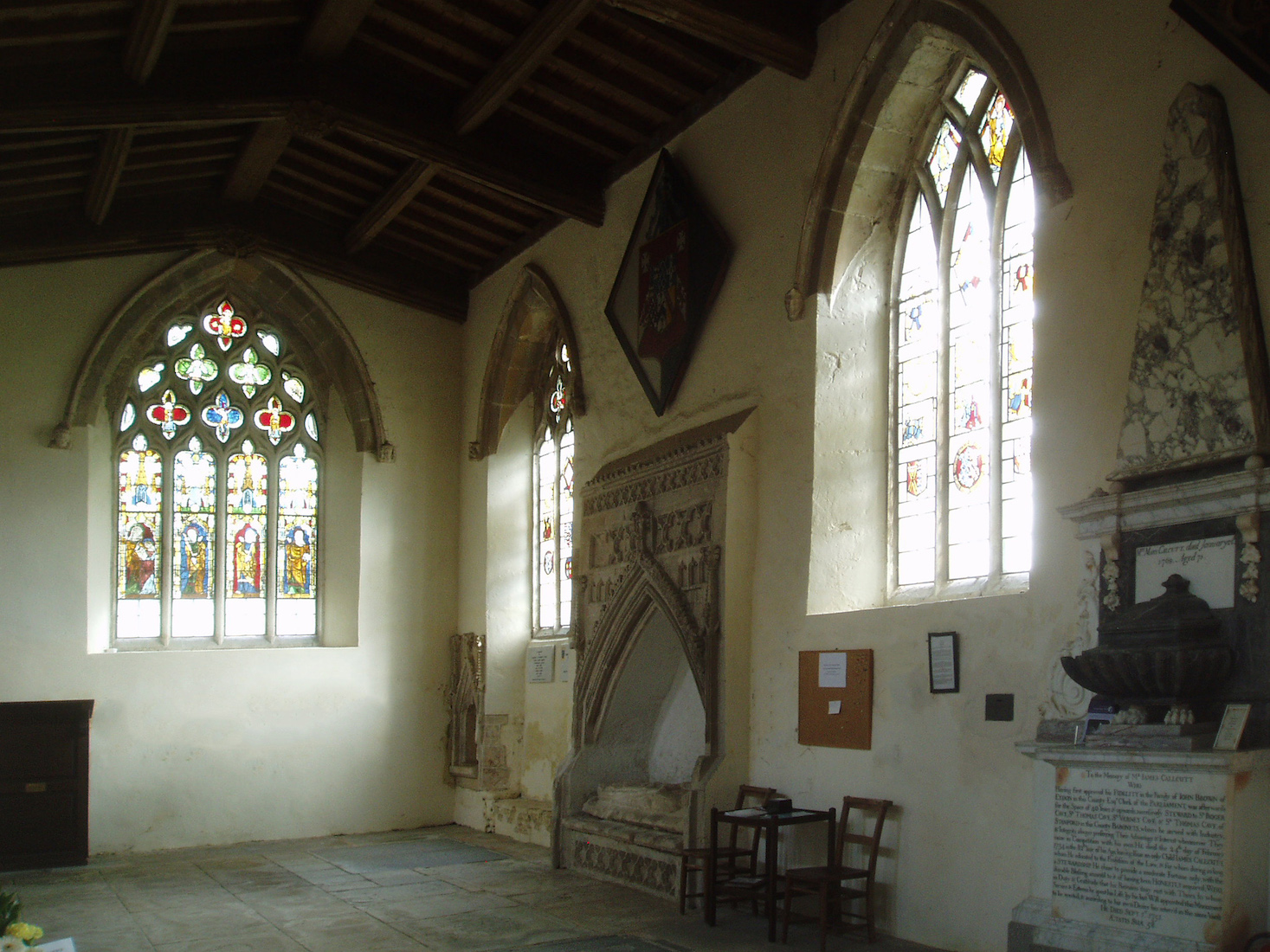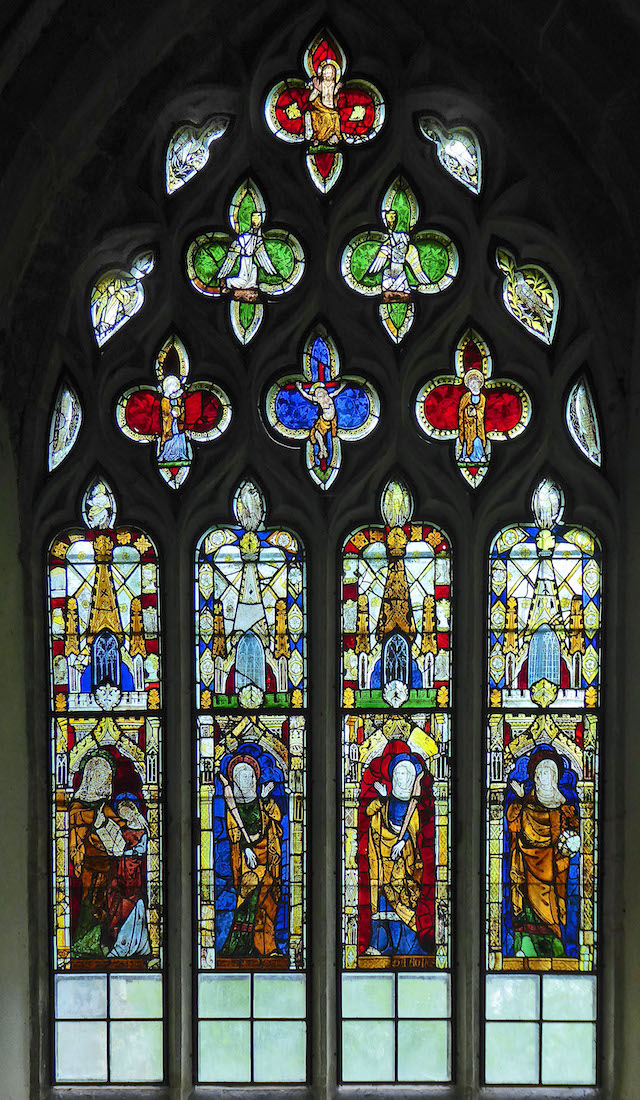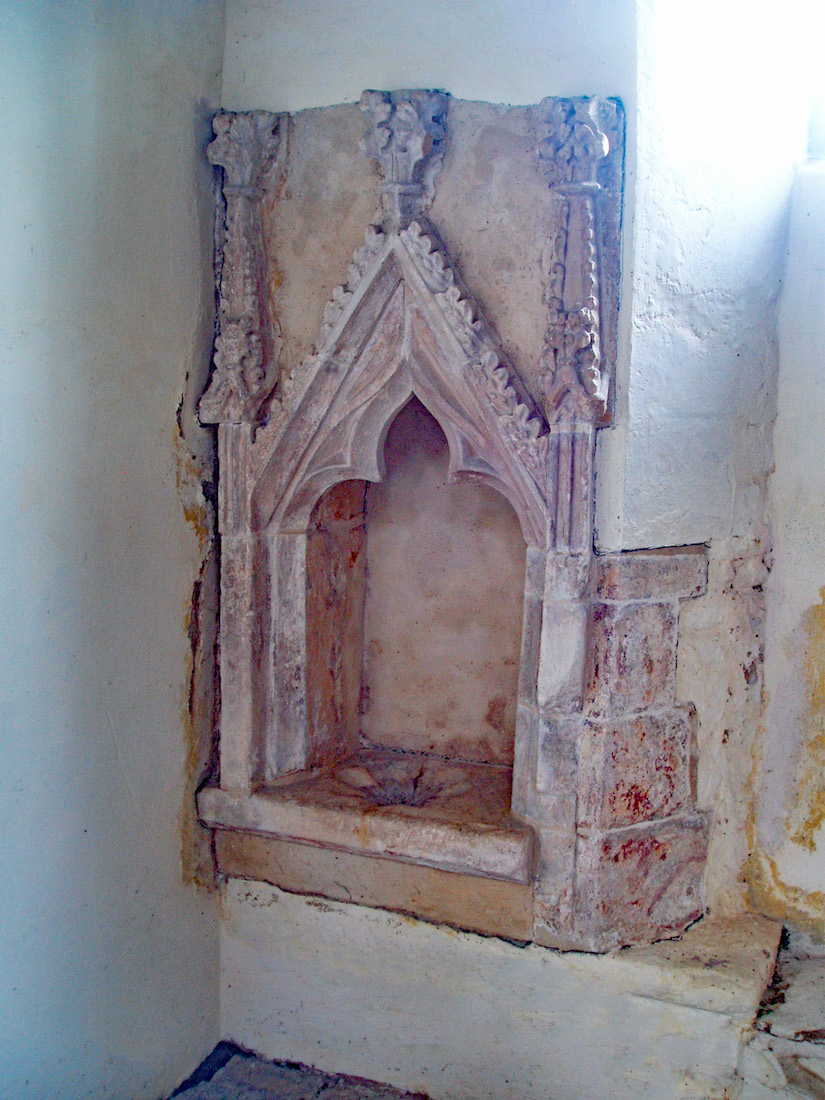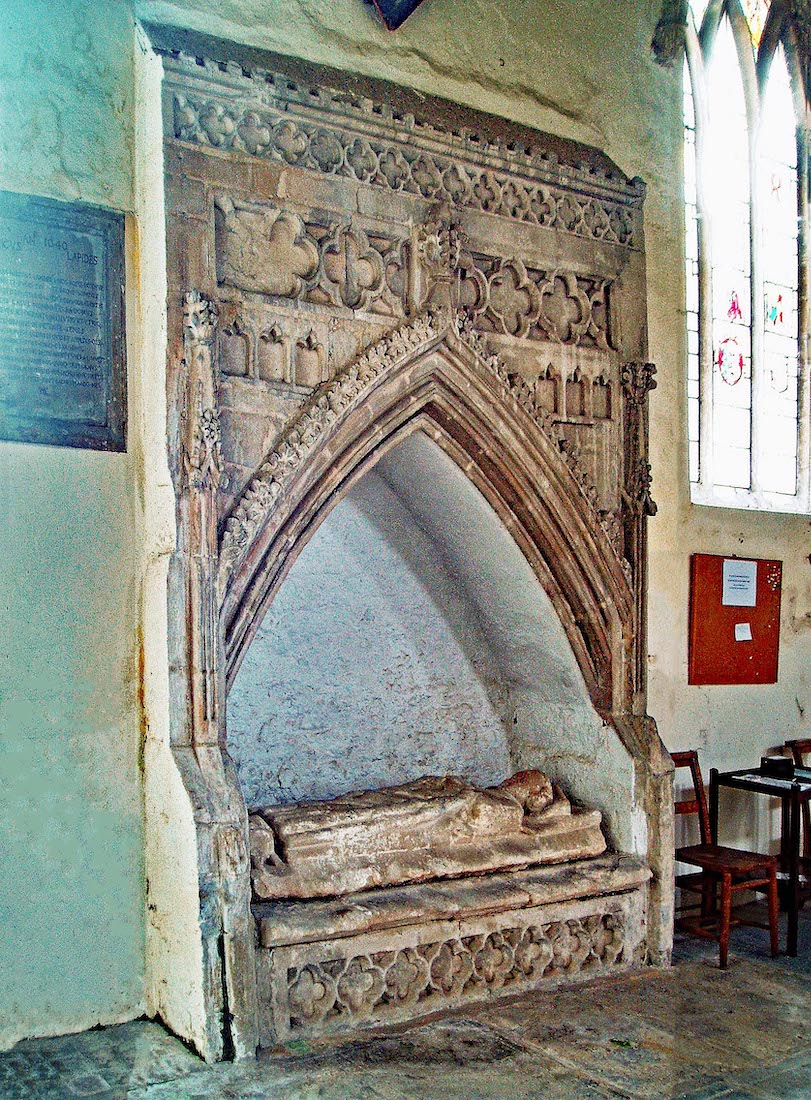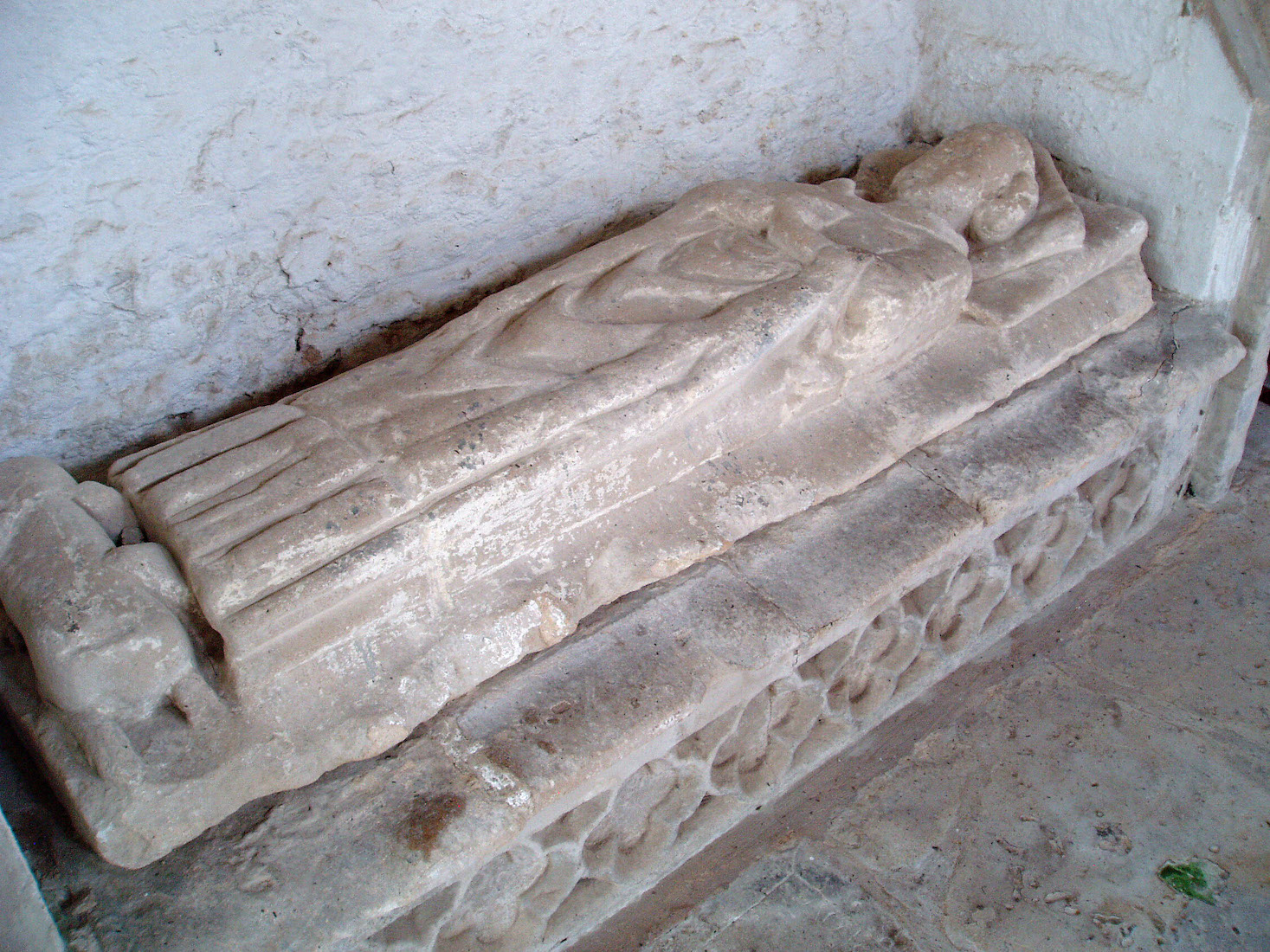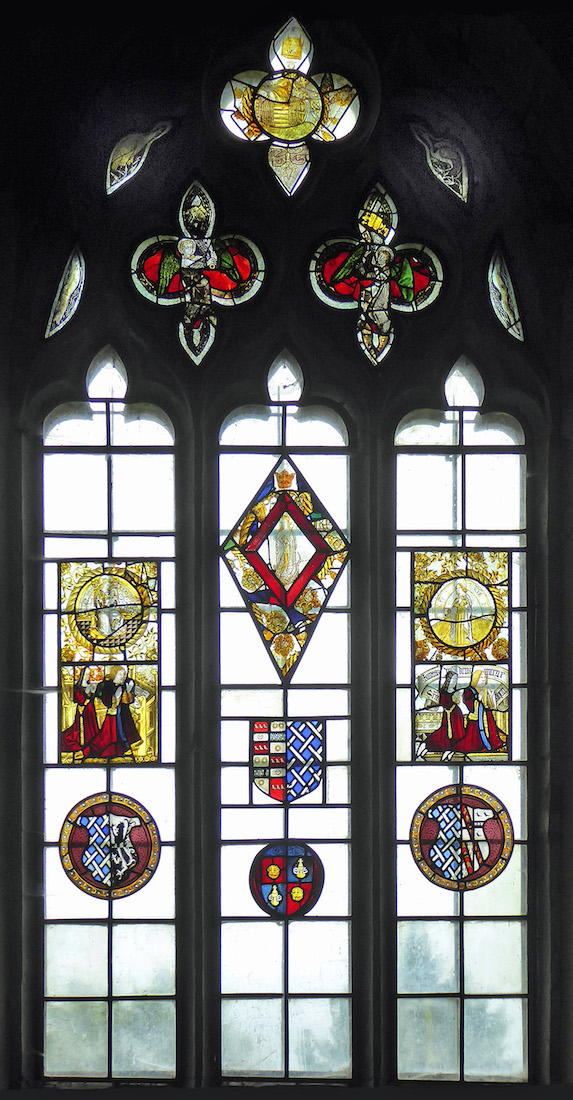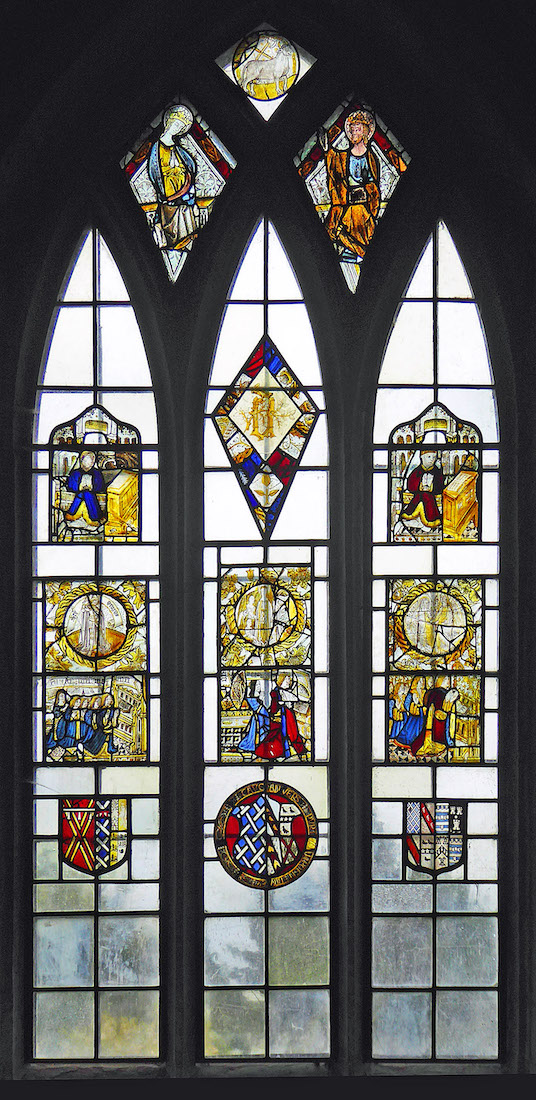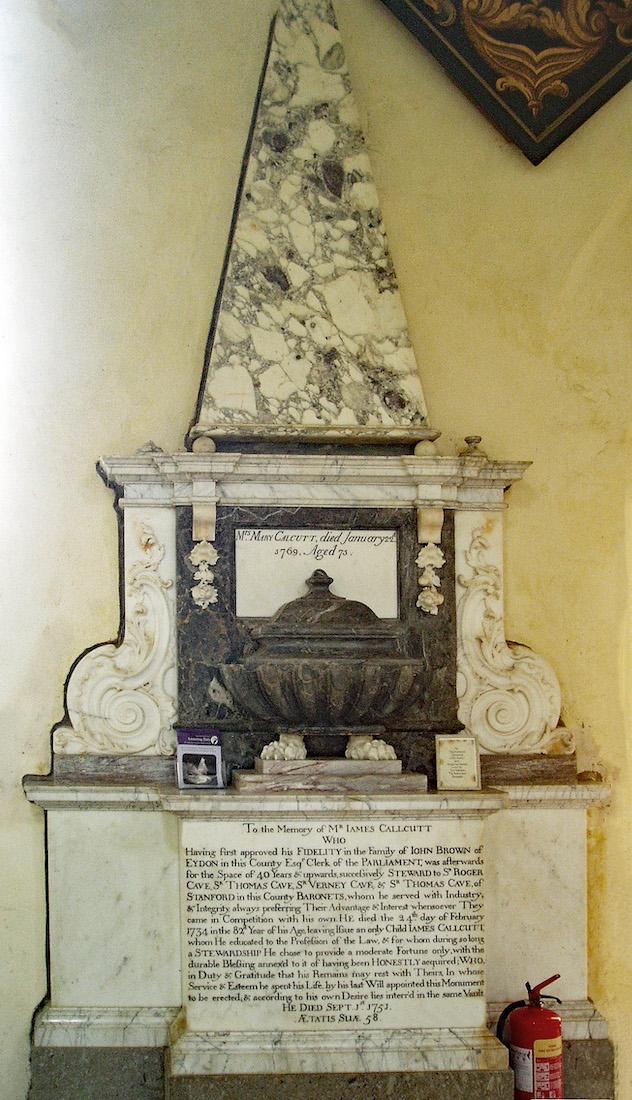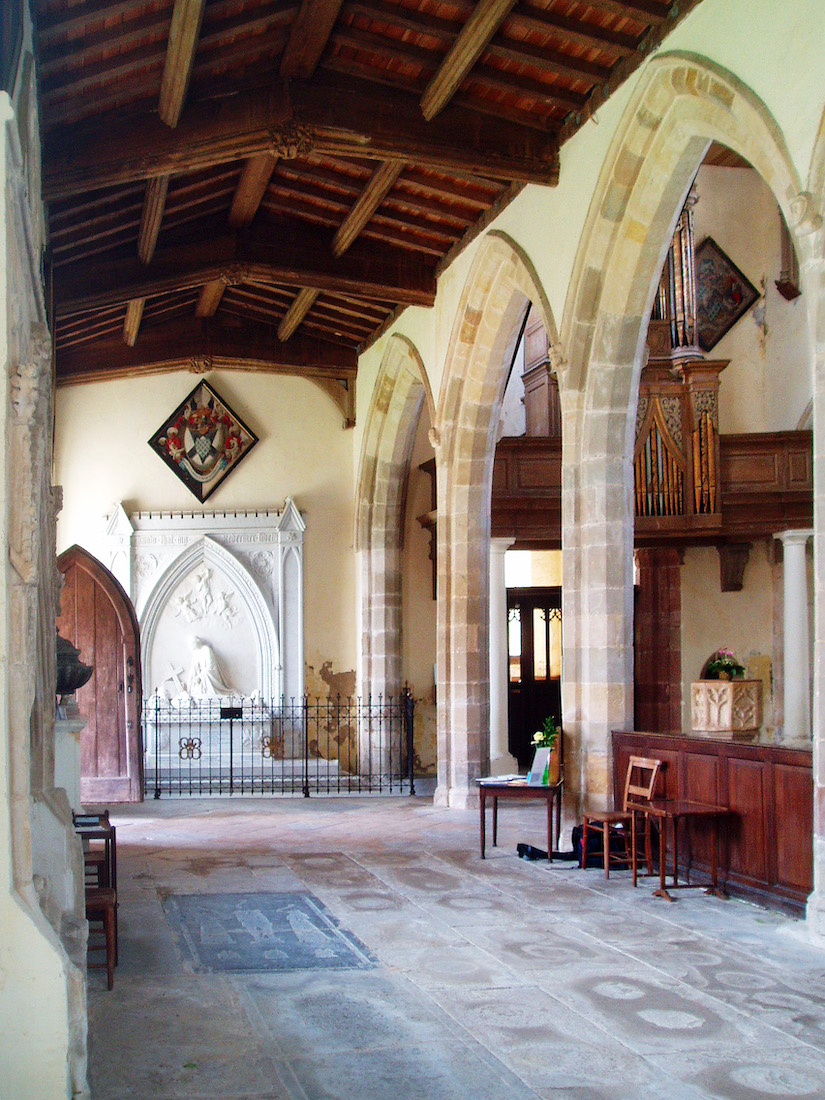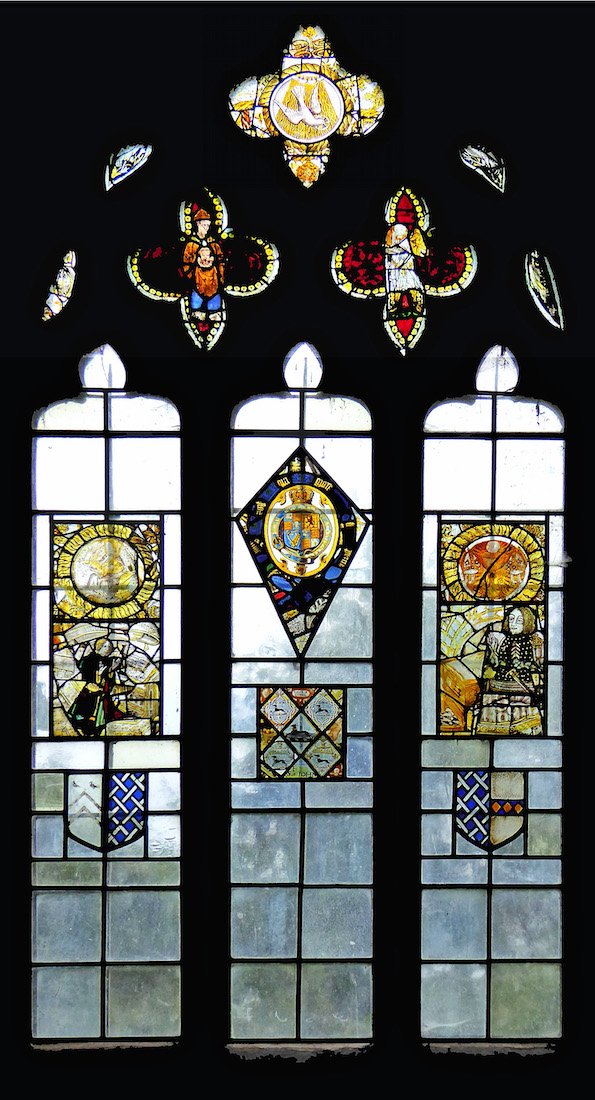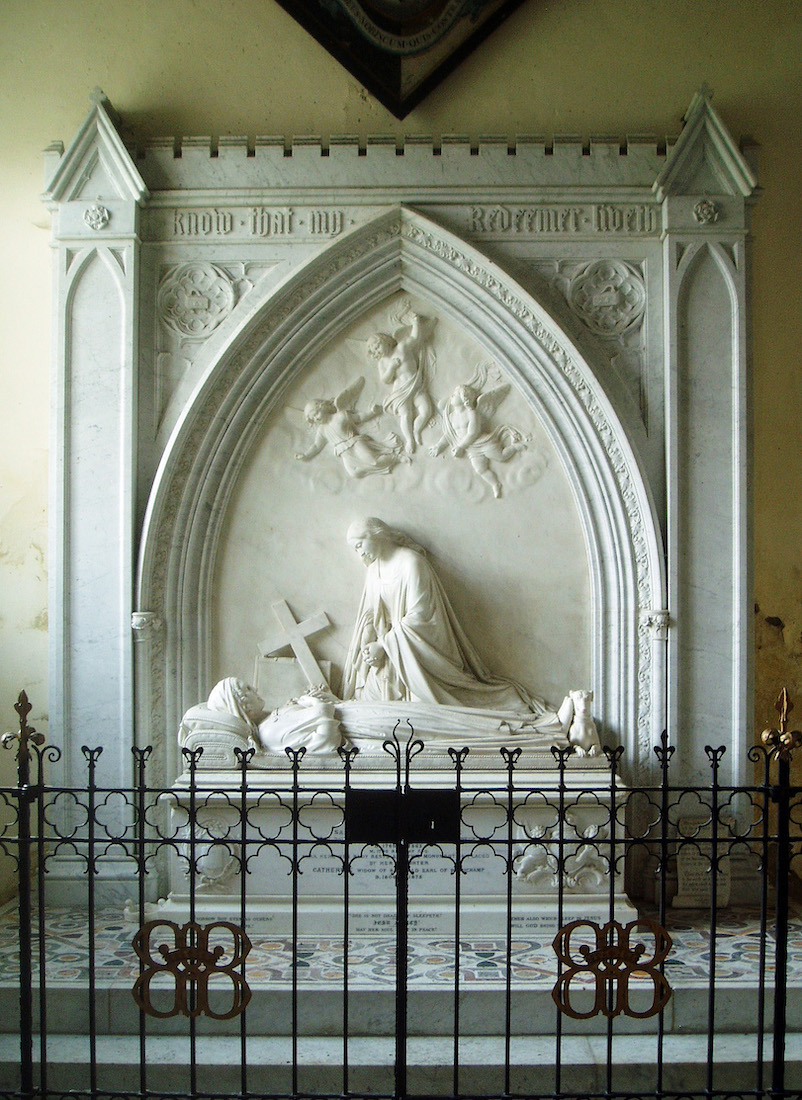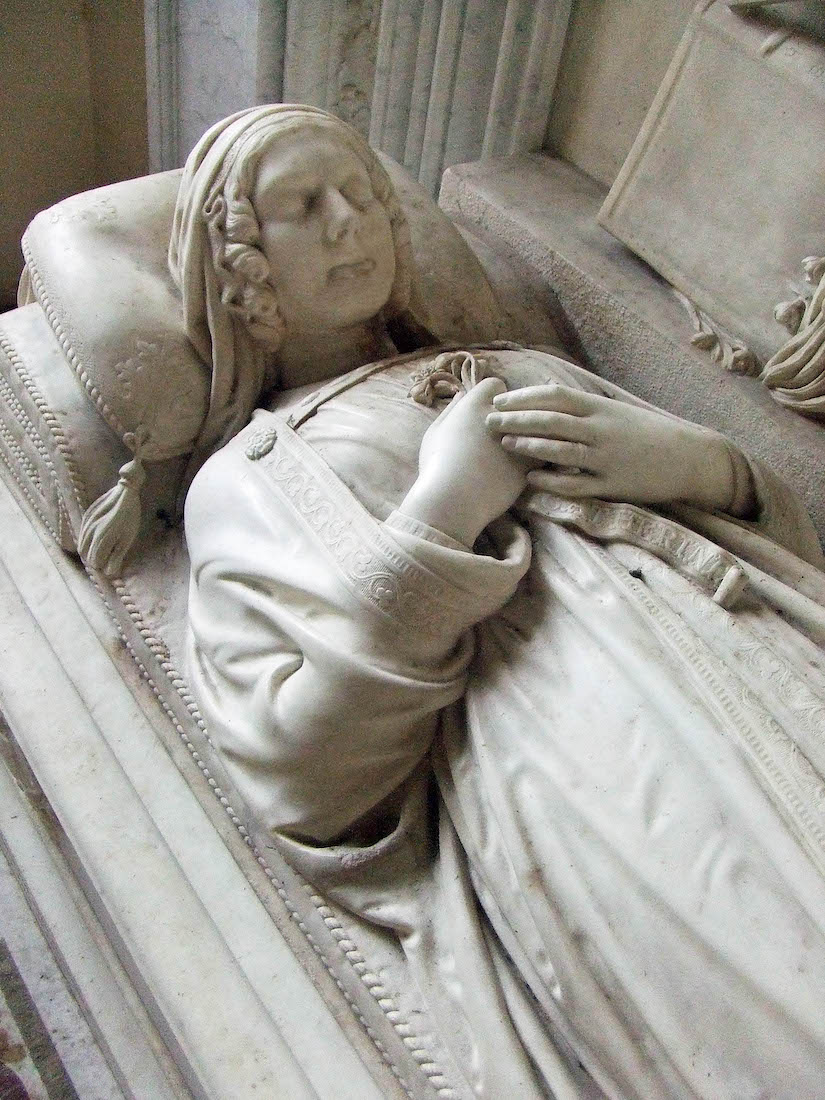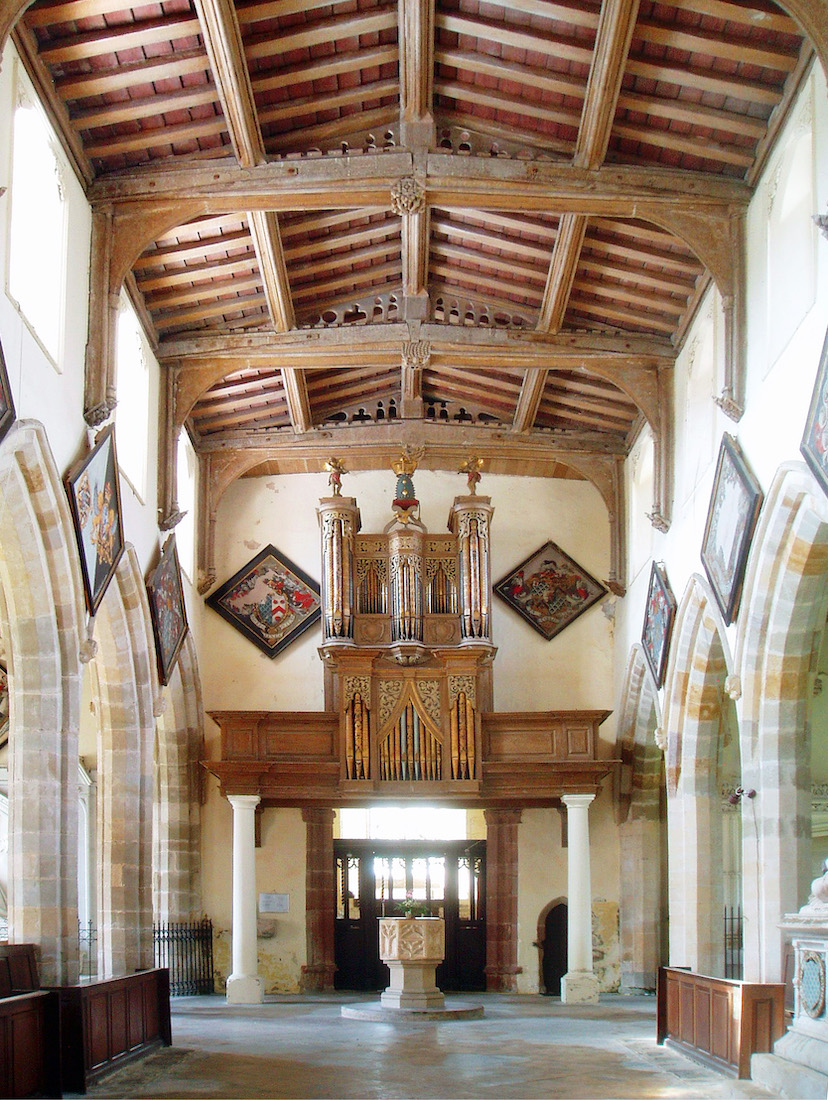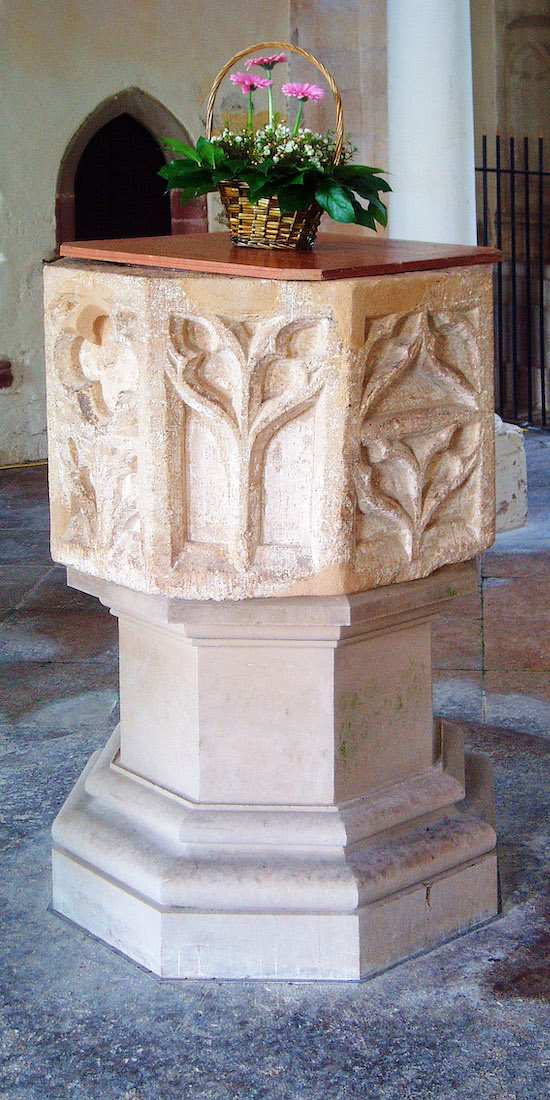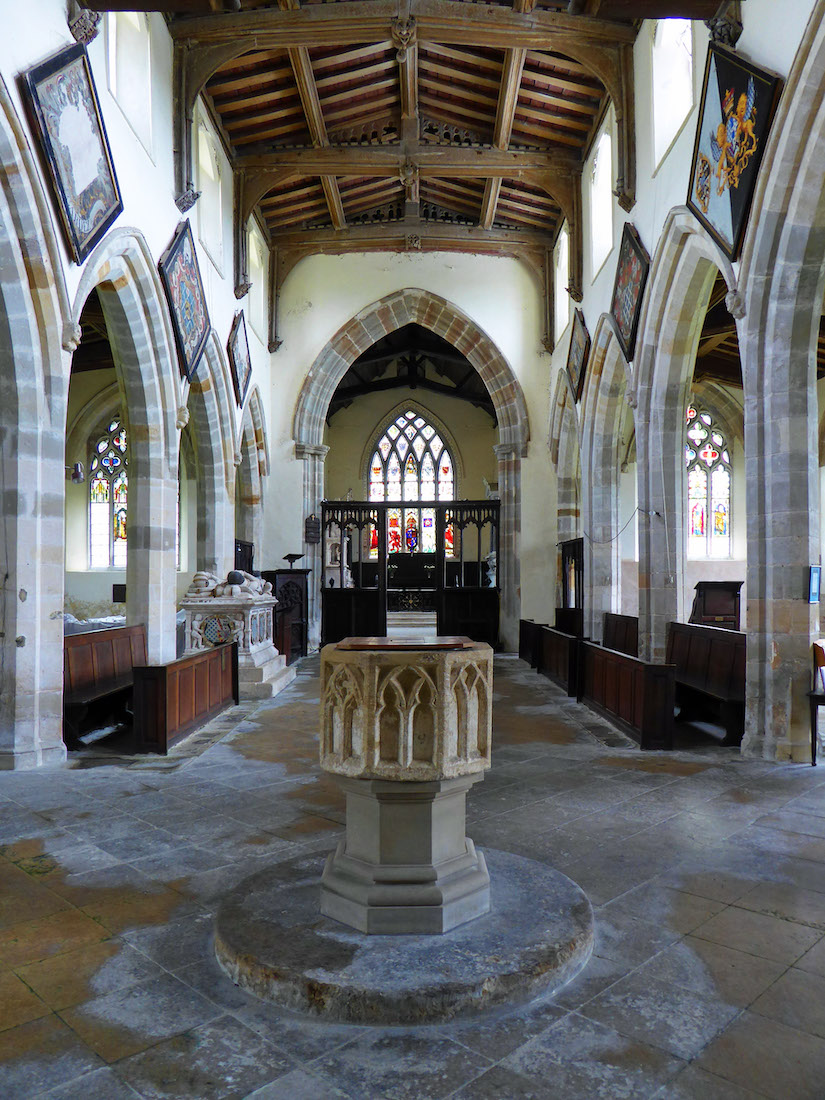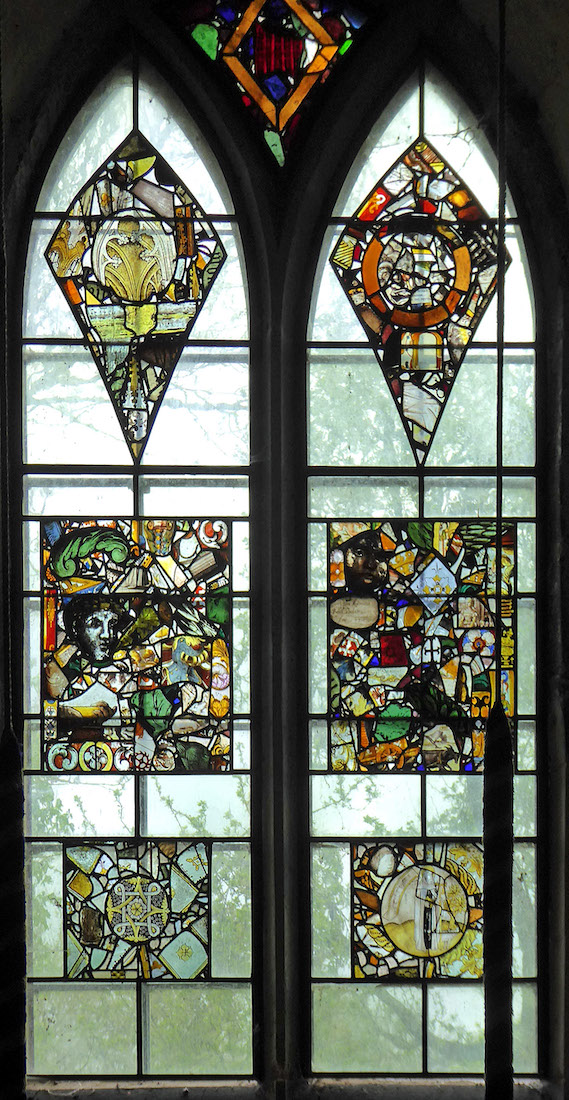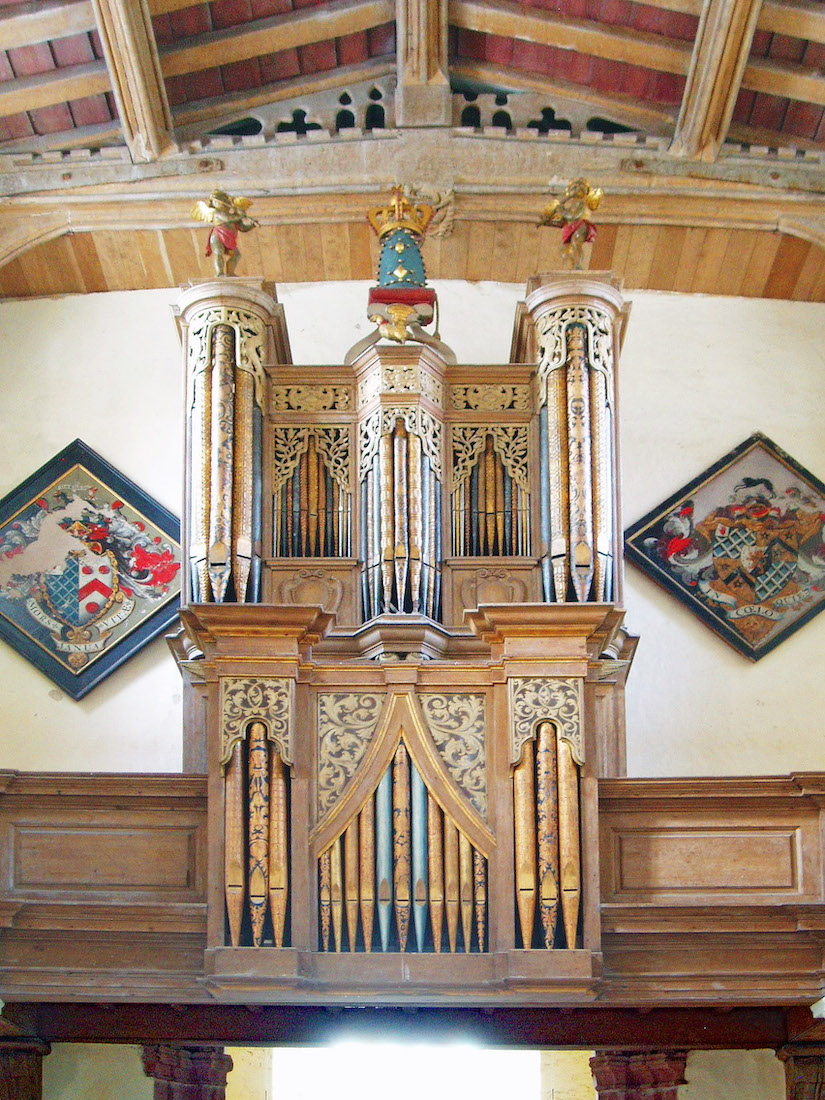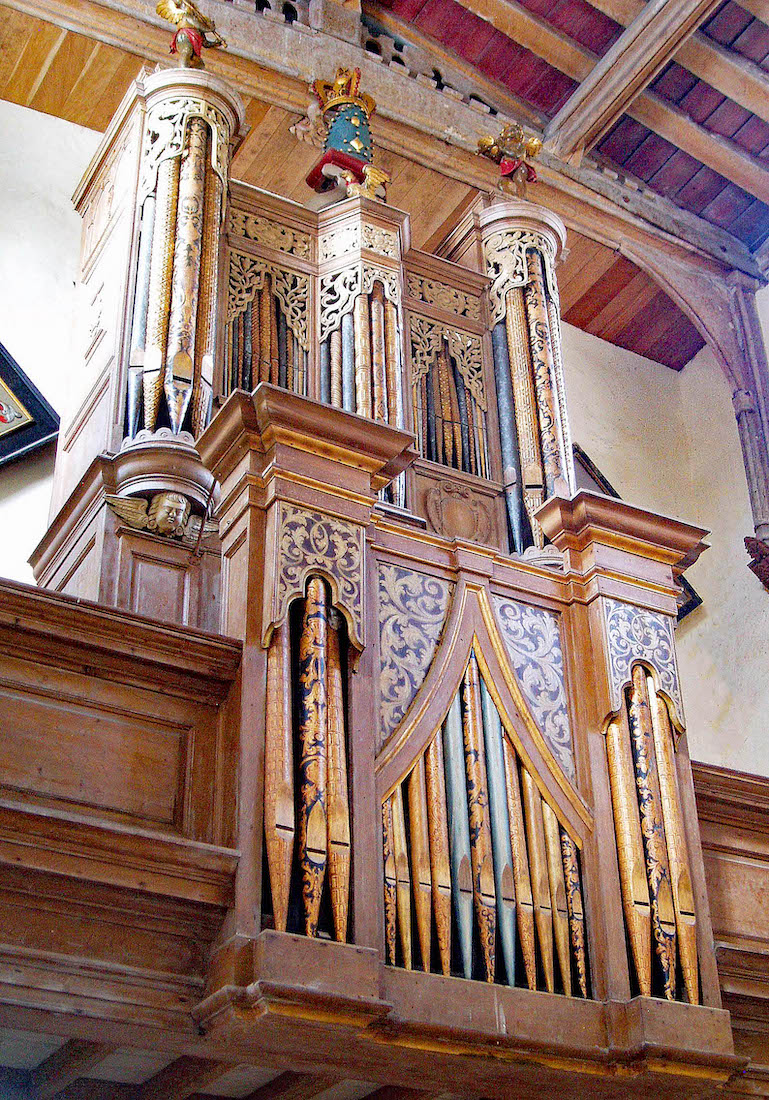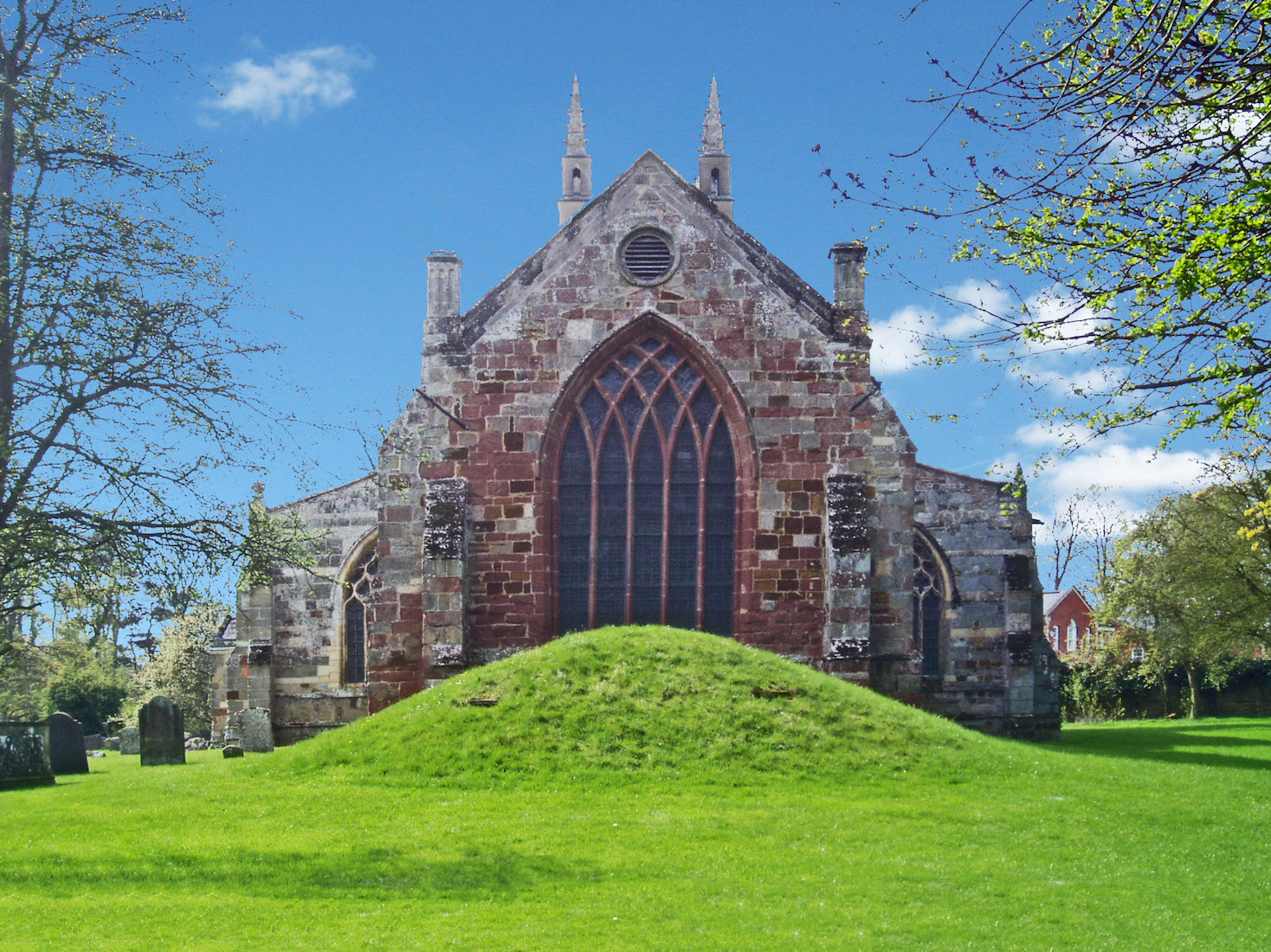
Most people will have heard of Stratford-on-Avon, but Stanford-on-Avon is relatively unknown: a scattering of houses, and the very old St Nicholas Church. If we follow Stanford Road around the corner to the north, we soon cross the River Avon on one of two little parallel bridges, and then we find the grand mansion Stanford Hall. St Nicholas’ Church was built in the first half of the 14th century, and is virtually unchanged, apart from the installation of a number of memorials inside. The Church has an unusual mound at its Eastern end: this is all that can be seen of the family burial vault for the Cave family of Stanford Hall.
2. APPROACH
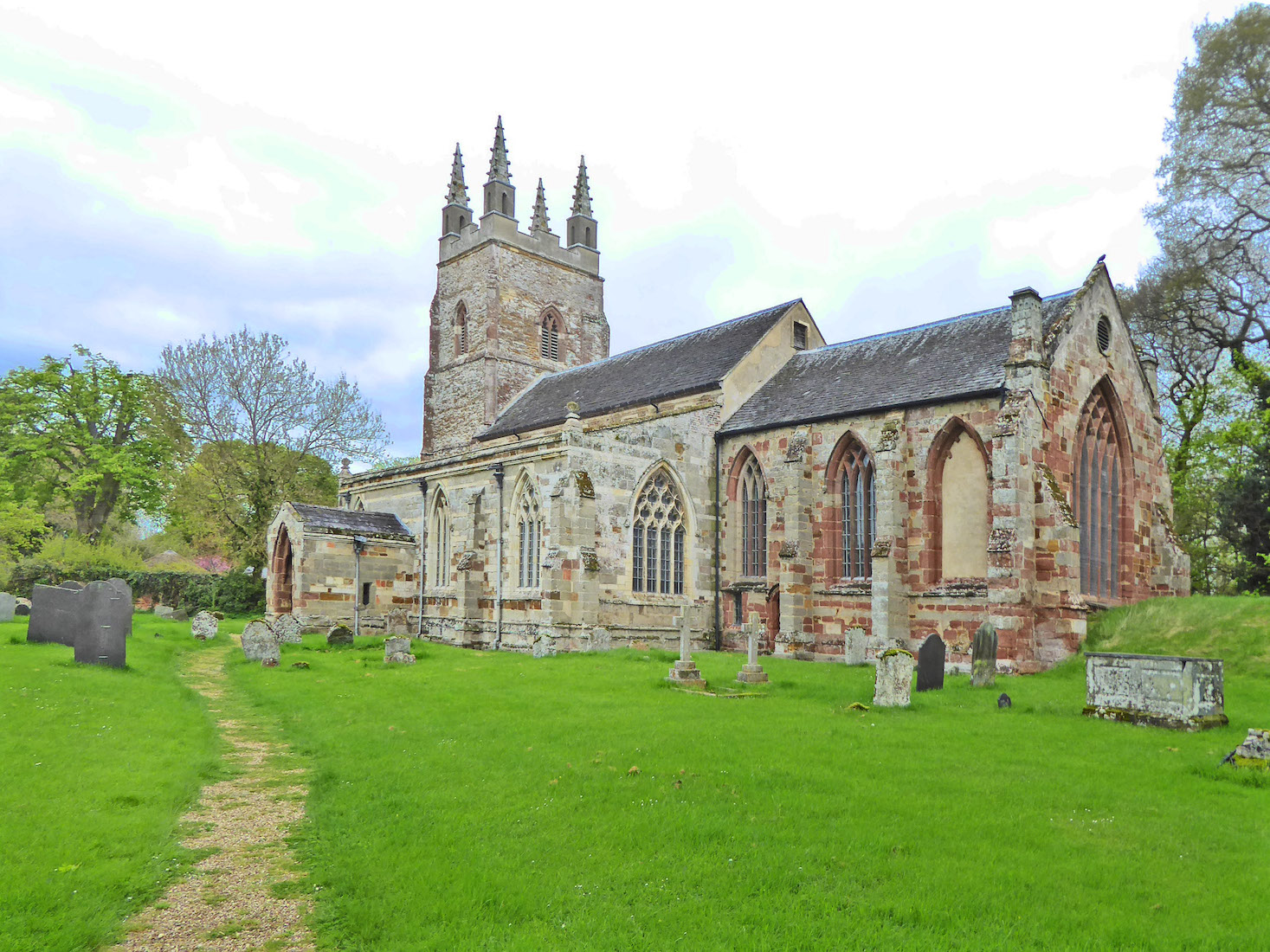
Technically, this Church lies in the county of Northamptonshire, but the border with Leicestershire along the River Avon is only a stone’s throw away. So Stanford Hall is actually in Leicestershire, and St Nicholas’ itself is part of the Diocese of Leicester. The Church has several boarded up windows: this occurred with the placing of some of the large monuments inside.
3. GRAVES
A number of old graves are dotted around the Church. The grounds appear to be well cared for.
4. SOUTH WALL
The windows of the Church are not all of the same style. We notice the set of high clerestory windows in the central nave. There is also a curious little low door and window at the West end of the chancel.
5. SOUTHWEST VIEW
There is a solid square tower at the West end of the Church. SImon Jenkins writes: ‘the steeple lacks a spire, the crude tower pinnacles forming a sort of apology’.
6. TOWER
The tower contains a set of five bells. Unusual but not uncommon, the ringing circle is anti-clockwise in rotation. It is verifiable there were five bells housed at Stanford from at least 1640. The present set includes three from Gillett & Johnson (1928), and two from Hugh II Watts (1640 and 1631). The inscriptions are interesting ... . • 1. SER THOMAS CAVE THIS BELL HEE GAVE 1631. (”Sir Thomas Cave, this bell he gave 1631.”); • 2. IH’S NAZARENVS REX IVDEORVM FILI DEI MISERERE MEI 1624. (“Jesus of Nazareth, King of the Jews, O Son of God have mercy on me.1624”); • 3. BE YT KNOWNE TO ALL THAT DOTH ME SEE THAT NEWCOMBE OF LEICESTER MADE MEE 1605. (”Be it known to all that do me see, Newcombe of Leicester made me 1605.”); • 4. PVLSOR & PVLSO JVBILO ET PLANGO SIC VITA HOMINIS 1640. (I am struck and I strike, I rejoice and I mourn, such is the life of man.); • 5. CVM SONO CI NON VIS VENIRE NVNQVAM AD PRECES CVPIES IRE 1631. (“If you be unwilling to come when I call To prayers you’ll not wish to go at all. 1631”).
7. FIRST VIEW INSIDE
We enter through the South porch, and this is our first view of the bright, light interior. We notice the Gothic arches with the little female heads at the top of each column. These heads are thought to depict the abbess and nuns of St Mary de Pratis Abbey in Leicester, which had a strong connection to Stanford on Avon in the early 14th century. Another feature of this Church is the many colourful (diagonal square) hatchments associated with members of the Cave family at Stanton Hall.
8. EAST ALONG THE SOUTH AISLE
To our right is the South aisle, and we begin our exploration here. Shown are some of the colourful medieval windows, a piscina in the corner, an old effigy, and at right, one of the large memorials in this Church.
9. SOUTH AISLE, EAST WINDOW
It is hard to interpret these old medieval windows. So for the bottom panels, four female saints? It seems likely that the left one shows St Anne teaching the young Mary, and at number 3, St Agnes gets a mention. Here are some close-up views.
10. PISCINA
In the corner of the aisle is a 14th century piscina – a place for washing glasses and chalices used in the mass.
11. PRIEST’S EFFIGY
Near the piscina is a medieval recess holding the 14th-century effigy of a priest in vestments. This is probably Alan De Aslaghby, the man responsible for the church we see today. His effigy rests atop a stone sarcophagus.
12. SOUTH AISLE WINDOWS
In this aisle there are two windows in the South wall and East of the porch. These contain a number of small scenes and coats of arms. The lattice criss-cross on the blue background is the emblem of the Cave family in Stanford Hall. Here are some details.
13. BAROQUE MEMORIAL
This Baroque memorial remembers the life of James Callcutt (Calcut?) and his wife Mary(?). James served as steward for the Cave family for forty years, dying in 1751.
14. SOUTH AISLE LOOKING WEST
We now look to the West end of the South aisle where there is a beautiful white monument. As well, we notice the Baroque monument on the left, one of the many fine hatchments on the end wall, and above us the old wood roof. As well there is an unintelligible burial slab in the floor! We can see the door to the porch where we came in, and beyond that the light from one more window.
15. SOUTH AISLE WINDOW
This is the window just West of the porch door. The central kite figure contains an elaborate crest. Some more detailed views can be found here.
16. SARAH BRAYE MONUMENT
The imposing white marble monument to Sarah 3rd Baroness Braye (d.1862, daughter of Sir Thomas Cave) at the West end of the South aisle. She is shown on her death bed whilst another female figure (presumably 'Faith' with cross and book, consoling her in her final moment) kneels beside her. Above three child angels hover, supposedly portraits of her children. The monument is believed to be the work of Mary Thornycroft. Some details are shown here.
17. NAVE LOOKING WEST
We leave the South aisle and move across to the central nave. This view looks West to the magnificent organ and the font. Beyond the font is the tower room which has another special window. The organ is flanked by two more hatchments, and further hatchments line the nave walls above the arches. Then above us is the interesting old wooden roof.
18. FONT
Like the rest of this Church the baptismal font is 14th century. Baptism is the rite of initiation into the Christian Church, and indeed, into the Christian life.
19. TOWER WINDOW
There is a single window facing West in the tower room of St Nicholas’ Church. It has the common style of inserted panels, but these panels are made up of assembled glass fragments.
20. ORGAN
Occupying most of the space under the high tower arch is a superb 16th-century organ supported by an oak gallery. This is one of the oldest organs in any English church. But how did it come to be here? The organ once belonged to King Charles I and stood in the Chapel Royal at Whitehall Palace in London. After Charles was executed in 1649 his belongings were sold by Oliver Cromwell. The organ was purchased by Magdalen College, Oxford. Someone in the College must have had a red face over the purchase, for it proved to be too small for their needs and they sold it on to Sir Thomas Cave of Stanford Hall in 1649/50. On the top of the organ is a carved mitre topped by a crown, a reminder of the king’s belief in the Divine Right of Kings.


